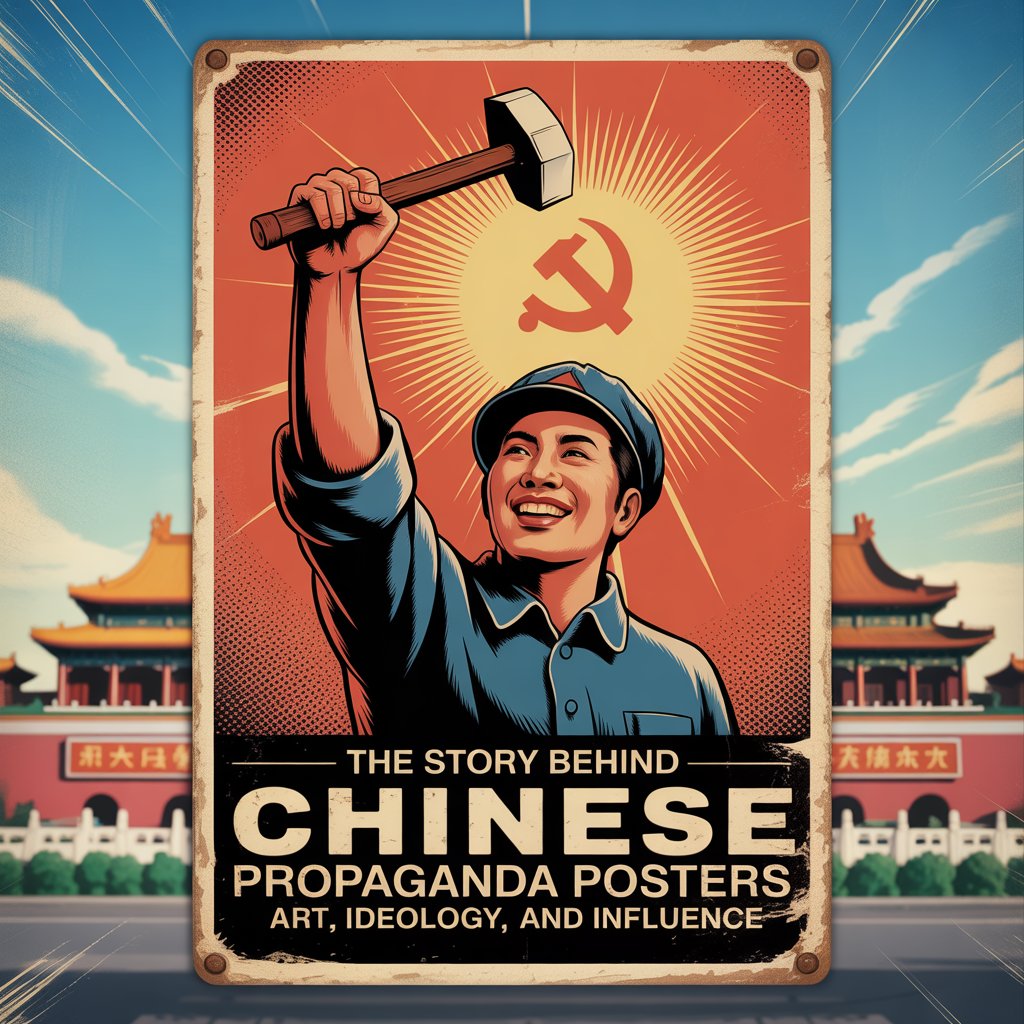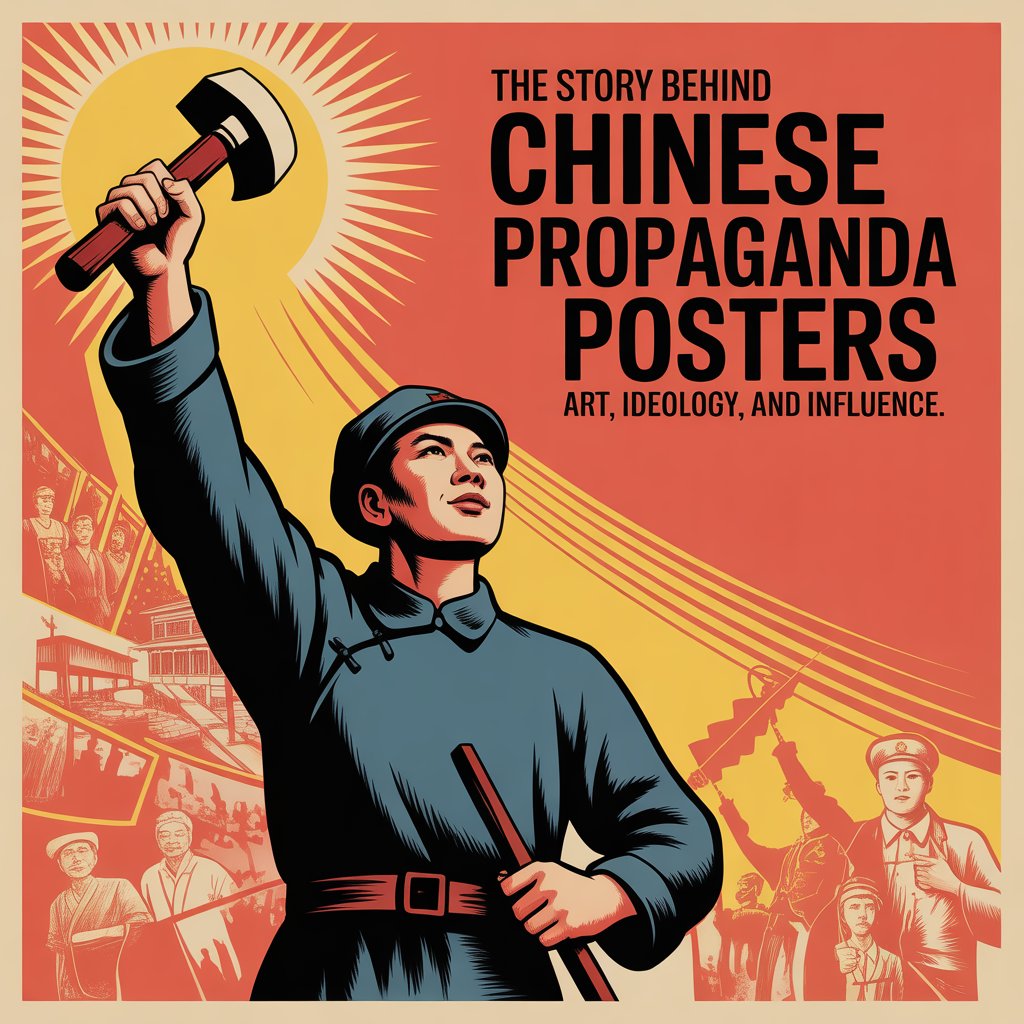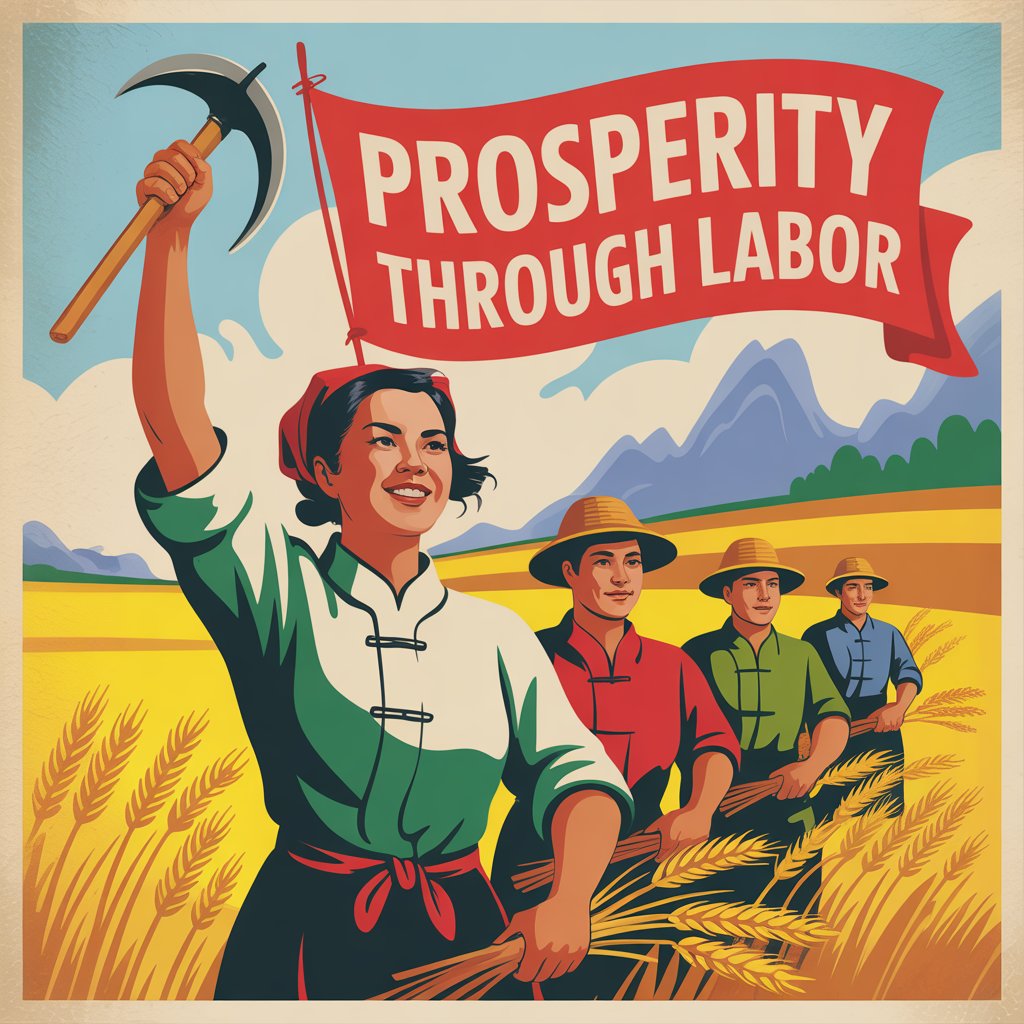Have you ever looked at a poster and felt like it was trying to tell you more than just a message? Like it was whispering an entire worldview into your ear? That’s exactly what Chinese propaganda posters have done for over a century. They’re not just about political slogans or red stars — they’re powerful windows into history, culture, and the shifting dreams of a nation.
Let’s dive deep into the fascinating world of Chinese propaganda posters — not just what they show, but why they matter, how they were used, and what they reveal about a changing China.
What Are Chinese Propaganda Posters, Really?
Imagine walking into a room and seeing a wall covered in bold, bright colors — smiling workers, waving flags, heroic soldiers, and golden fields of grain. At first glance, it might just seem like patriotic art. But these posters had a job: to inspire, to inform, and often, to persuade.
Propaganda posters in China are visual tools used by the government to promote certain ideas, especially during key historical periods. These posters were designed to stir emotions and unite people under common goals — whether it was revolution, industrial growth, or social harmony.
The Birth of a Movement: Origins in the Early 20th Century
While many associate propaganda with Mao Zedong’s era, it actually began much earlier. Around the 1910s and 1920s, as China transitioned from a dynastic empire to a republic, early posters focused on nationalism, modernization, and public health.
Back then, posters weren’t just political. They told people how to prevent diseases, encouraged education, and warned against foreign influence. The poster was the smartphone of its time — a quick way to spread a message to people who might not read newspapers or own a radio.
Mao Zedong and the Golden Age of Propaganda

This is where things got intense. Starting in the late 1940s, after the Chinese Communist Party came to power, posters exploded in both number and significance. Under Mao, the poster became a central weapon in shaping public consciousness.
During the Great Leap Forward and the Cultural Revolution, these posters were everywhere: schools, factories, homes, and streets. They celebrated the worker, glorified the farmer, and idealized the leader. In fact, many posters from this time featured Mao as a godlike figure — glowing, smiling, and surrounded by adoring masses.
It was visual storytelling on a national scale.
Themes That Defined an Era
Propaganda posters weren’t random works of art — they followed specific themes that aligned with political campaigns. Some of the most common included:
-
Agricultural Prosperity: Posters showed golden wheat fields, giant harvests, and joyful farmers, reflecting campaigns like the Great Leap Forward.
-
Industrial Strength: Images of steelworkers, machines, and tall chimneys promoted the rise of China as an industrial power.
-
Military Power: Soldiers with rifles, tanks, and planes reinforced strength and readiness, especially during tensions with foreign countries.
-
Gender Equality: Women were shown driving tractors, working in factories, or holding babies while quoting Mao — suggesting that women could do anything men could.
These themes weren’t just about ideals. They shaped how people saw themselves and what they believed was possible.
Visual Language: Bold Colors and Strong Figures
What makes these posters so striking isn’t just their message — it’s how they look. The design language of Chinese propaganda is unmistakable: bright reds, strong contrasts, bold fonts, and exaggerated facial expressions.
Red, symbolizing revolution and vitality, was everywhere. Figures were often drawn in heroic poses — looking up to the future, muscles flexed, eyes filled with hope. It’s like each image was shouting, “We’re building something great!”
Even today, this style influences art and design globally — from fashion to political satire.
Art With a Mission: The Role of Artists

Behind every poster was an artist — often working under government direction. Unlike commercial artists in the West, these creators didn’t just chase beauty or innovation. Their job was to serve the nation’s vision.
Many were classically trained in both Chinese painting and Western realism. This mix gave the posters a unique blend of dramatic storytelling and cultural symbolism.
Interestingly, some artists were anonymous, while others became minor celebrities — their work printed in millions of copies across the country.
Life Imitates Art: How Posters Shaped Society
Propaganda posters weren’t just passive decorations. They actively shaped how people dressed, talked, and even dreamed.
Children grew up idolizing the “model worker” on the wall. Farmers believed that if they worked hard, their fields could really look like the golden utopias in the posters. Teachers, doctors, and soldiers found role models in these painted characters.
In a way, these posters created a parallel world — not always real, but deeply influential.
Criticism and Control: The Double-Edged Brush
Not everyone bought into the idealism. Many posters painted a picture that didn’t match people’s daily struggles. During the Great Leap Forward, for example, posters showed abundant food while millions faced famine.
Later, during the Cultural Revolution, posters often encouraged people to report on neighbors or even family members. The posters became tools not just for hope, but for control.
That’s the complex legacy — inspiration mixed with fear.
A Shift in Tone: Post-Mao Propaganda

After Mao’s death in 1976, China began to change. Deng Xiaoping’s economic reforms marked a turning point, steering China away from rigid ideology and toward a path of pragmatic growth and modernization.
And the posters changed, too.
Gone were the giant portraits of Mao and the red sea of flags. In their place came softer images: smiling families, green fields, and healthy children. The message? Harmony, modernization, and prosperity.
The tone was less revolutionary, more reassuring.
Modern Versions: Propaganda in the Digital Age
You might think propaganda posters are relics of the past, but they’re still around — just in new forms.
Modern China delivers public messages through digital billboards, animations, and social media, often echoing the vibrant, optimistic style of its classic propaganda posters to promote values like patriotism, safety, and sustainability.
It’s like the propaganda poster got a smartphone makeover.
Collecting History: Posters as Artifacts and Souvenirs
In recent years, vintage Chinese propaganda posters have become hot collector’s items. Museums, artists, and even tourists hunt for them as historical treasures.
Some see them as kitschy retro art. Others view them as serious political relics. Either way, they’re a visual time capsule — each one a freeze-frame of a moment, a mood, and a movement.
Why Do They Still Matter Today?
Here’s the big question: why should anyone today care about these posters?
Because they help us understand how a country tried to shape its own identity. Because they show the power of images in creating unity — or division. And because they remind us that even art with a clear agenda can be beautiful, complex, and deeply human.
Chinese propaganda posters aren’t just about China. They’re about how people, everywhere, are influenced by what they see.
Frequently Asked Questions (FAQs)
1. When did Chinese propaganda posters become popular?
They gained major popularity after the founding of the People’s Republic of China in 1949, particularly during Mao Zedong’s campaigns like the Great Leap Forward and Cultural Revolution.
2. Were these posters effective in influencing people?
Yes, they played a significant role in shaping public opinion, reinforcing government narratives, and even influencing behavior and cultural norms, especially in rural areas.
3. Are propaganda posters still used in China today?
While traditional posters are less common, modern versions exist in digital forms — through public screens, social media, and mobile apps, continuing the legacy in a new medium.
4. Can you buy original Chinese propaganda posters?
Yes, many vintage posters are available through collectors, museums, and online platforms. However, their prices vary based on rarity and condition.
5. What makes these posters unique compared to Western propaganda?
Chinese posters often blend socialist realism with traditional Chinese art and cultural themes. They also had a more centralized production, with the government overseeing most of the content.
Conclusion: More Than Just Pictures on a Wall
Looking at Chinese propaganda posters is like flipping through a national diary written in pictures. They tell stories of hope, ambition, fear, control, and resilience. They show us how art can be both a mirror and a map — reflecting who we are and where someone wants us to go.
So next time you see one, don’t just glance and move on. Look closer. There’s a whole world inside the frame.










